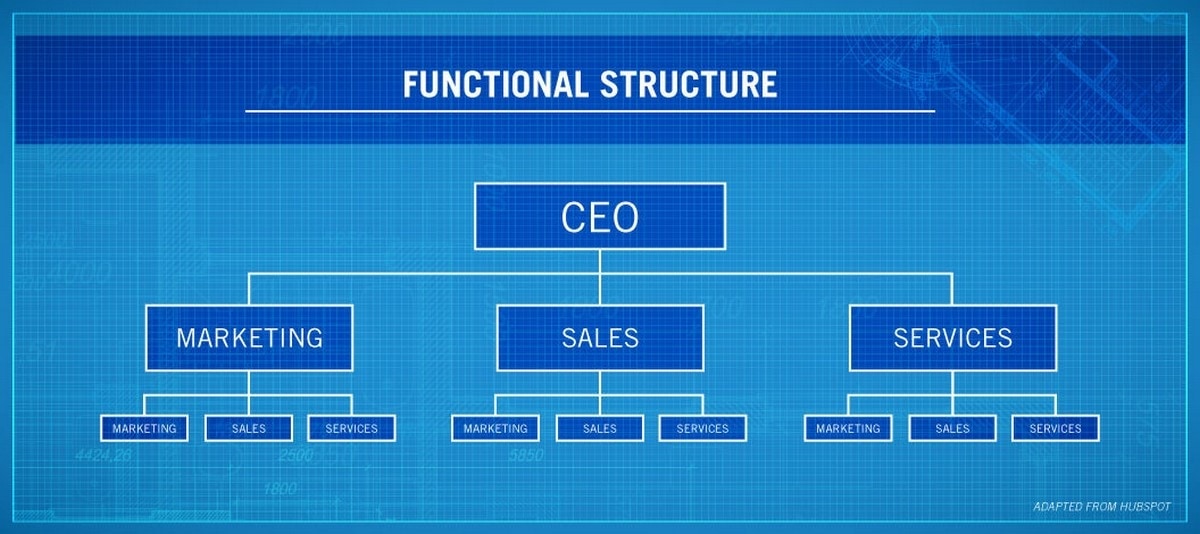Functional management structure, a fundamental organizational model, takes center stage in this captivating exploration. Its unique characteristics and implications unfold, inviting readers to delve into a realm of structured efficiency and collaboration.
This comprehensive guide unveils the intricacies of functional management structure, delving into its advantages, challenges, and real-world applications. Prepare to gain invaluable insights into a foundational organizational framework that shapes business operations across industries.
Organizational Structure
A functional management structure is a type of organizational structure where employees are grouped together based on their specialized skills and knowledge. This structure is often used in large organizations with a wide range of products or services, as it allows for a high level of specialization and expertise within each department.
Unlike other organizational structures, such as divisional or matrix structures, a functional management structure does not group employees based on project or product lines. Instead, employees are grouped together based on their functional area, such as finance, marketing, or operations.
This structure can lead to increased efficiency and productivity, as employees can focus on developing their skills and knowledge within a specific area.
However, there are also some disadvantages to using a functional management structure. One disadvantage is that it can lead to a lack of communication and coordination between different departments. This is because employees in different departments may have different goals and objectives, which can make it difficult to work together effectively.
Another disadvantage is that it can lead to a lack of innovation, as employees may be less likely to take risks or try new things if they are only focused on their own functional area.
Key Features
There are a number of key features that are typically found in a functional management structure. These features include:
- Employees are grouped together based on their specialized skills and knowledge.
- Each department is responsible for a specific function, such as finance, marketing, or operations.
- Departments are typically headed by a functional manager who is responsible for the overall performance of the department.
- Decision-making is typically centralized at the top of the organization, with functional managers having limited decision-making authority.
Functional Departments
In a functional management structure, there are typically a number of different functional departments. These departments may include:
- Finance
- Marketing
- Operations
- Human resources
- Information technology
Each department is responsible for a specific function within the organization. For example, the finance department is responsible for managing the organization’s finances, the marketing department is responsible for promoting the organization’s products or services, and the operations department is responsible for producing the organization’s products or services.
Communication and Coordination
Effective communication and coordination are essential in a functional management structure. This is because employees in different departments need to be able to work together effectively in order to achieve the organization’s goals. However, communication and coordination can be challenging in a functional management structure, as employees may have different goals and objectives.
To overcome this challenge, organizations can implement a number of strategies, such as:
- Creating cross-functional teams
- Holding regular meetings between different departments
- Developing clear communication channels
Performance Management, Functional management structure
Performance management is the process of measuring and evaluating employee performance. In a functional management structure, performance is typically measured and evaluated by functional managers. Functional managers are responsible for providing feedback to employees on their performance and for helping them to improve their performance.
Performance management can be challenging in a functional management structure, as it can be difficult to measure and evaluate the performance of employees who are working in different departments. To overcome this challenge, organizations can implement a number of strategies, such as:
- Developing clear performance goals
- Providing regular feedback to employees
- Using a variety of performance measurement tools
Benefits and Limitations
There are a number of benefits to using a functional management structure. These benefits include:
- Increased efficiency and productivity
- Improved quality
- Reduced costs
- Increased innovation
However, there are also some limitations to using a functional management structure. These limitations include:
- Lack of communication and coordination
- Lack of innovation
- Slow decision-making
- Difficult to manage change
Conclusive Thoughts

In conclusion, functional management structure presents a well-defined organizational approach, offering both advantages and limitations. Its emphasis on specialization and clear lines of authority can foster efficiency and expertise. However, potential drawbacks, such as communication barriers and limited flexibility, must be carefully considered.
Understanding the nuances of functional management structure empowers organizations to make informed decisions about its implementation. By aligning structure with strategic objectives, businesses can harness its strengths while mitigating potential challenges, ultimately driving success in a competitive landscape.
Essential Questionnaire: Functional Management Structure
What is the primary advantage of a functional management structure?
Functional management structure promotes specialization and expertise within departments, enhancing efficiency and knowledge retention.
How does decision-making occur in a functional management structure?
Decisions are typically made by functional managers within their respective areas of expertise, with input from cross-functional collaboration when necessary.
Functional management structures, characterized by specialization and clear lines of authority, provide efficient coordination and control. However, when considering investment opportunities, it’s crucial to understand the intricacies of real estate financing. For instance, navigating the eligibility criteria for VA loans, as discussed in the comprehensive guide can you buy an investment property with a va loan , is essential for informed decision-making.
Understanding such financial aspects complements the functional management structure by enabling strategic resource allocation and risk management.
What are some challenges associated with functional management structures?
Communication barriers between departments and limited flexibility in response to changing market conditions can be potential challenges.
